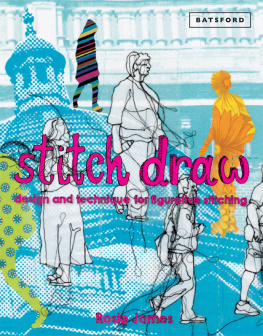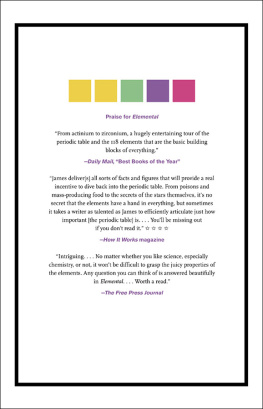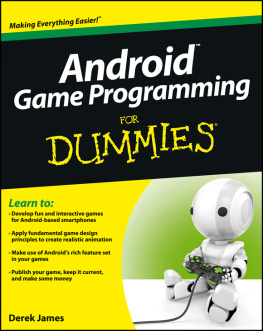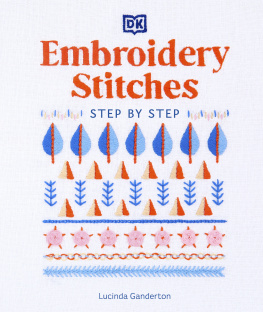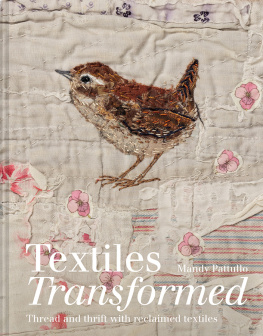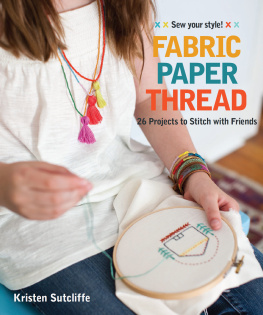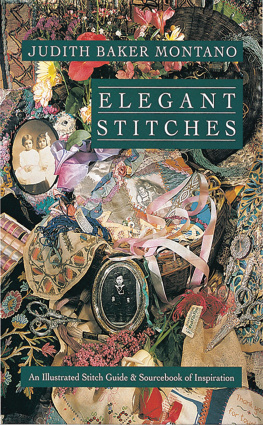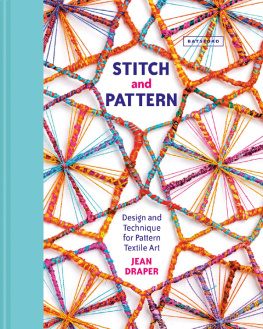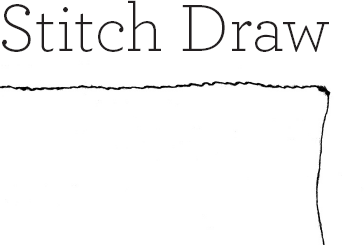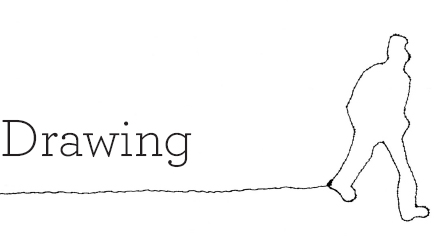Stitch Draw


Rosie James

Contents
Introduction
Stitch drawing is the act of using a needle and thread to draw with, just as you might use a pencil or pen. In this book we are going to focus on using a sewing machine to draw, rather than stitching by hand.
Artists have been using thread to draw with for years. A good example of this is the Bayeux Tapestry, which dates from the eleventh century. It is interesting that stitch was used to make drawings of actual events and to tell a story, rather than paint on canvas or pencil on paper. Wall hangings were common at that time, but The Bayeux Tapestry seems to be the only surviving example of medieval narrative embroidery that we know of.
Since then embroidery as an art form has gone in and out of fashion. Today artists use all sorts of materials to create their work, and threads and fabrics are almost as common as paint or sculptors materials.
When you draw with a pen or pencil, the instrument becomes an extension of your hand and you can respond to what you are seeing immediately. The sewing machine is a totally different beast, in that you cannot respond quite so immediately to whats in front of you, yet with a bit of practice, you can move the cloth and hoop fluidly and draw directly from life. However, most of the stitched drawings we will look at in this book will be drawn with pencil first and then transferred to the stitching surface.
Photography also plays a big part. I use it as a way of getting ideas and also for capturing moving images. We will be looking at how to draw from photographs as well as manipulating photographs on the computer.
Stitching made with a sewing machine lends itself to a certain kind of fluid line. As Paul Klee put it, Drawing is taking a line for a walk. A sewing machine will follow a line continually for as long as you have your foot on the pedal. All you need to do is to guide that line in a particular direction to create a drawing in stitch. And you do not have to be an expert on a sewing machine in order to make drawings with it, as you will see.

Detail of a life-size figure from . Notice how the stitching takes a line for a walk, in a continuous, flowing movement.

Lets begin by drawing with a pen or pencil on paper. This will get you started and give you exciting drawings that can be developed into stitch.
Pencil and paper
In order to get really good at stitch drawing with a sewing machine, you need to start with the basics drawing with pencil on paper which allows you to draw more directly from what you see than you would if you attempted to stitch-draw straight off. These drawings can form the basis of your later stitched drawings. So lets start drawing.
Drawing is essentially all about looking. In order to create a good drawing, you need to look carefully at the object you are drawing. Spend more time looking at the object than at the paper you are drawing on.
So get yourself a piece of paper and something to lean on, or open a page in your sketchbook. Use a soft pencil that creates a nice dark line which doesnt smudge too easily something like a 2B.
Flex your drawing muscles
Here are some exercises to try: just enjoy them and see what comes out. You can go on to interpret some of the results in stitch, as we shall see later.
Exercise 1: looking
Find an object you are really familiar with, such as a favourite shoe, old coat or a bag, as in this example. Put the object in front of you, then close your eyes and imagine the object in your minds eye. Try to see its colour, its form, its texture and its scale. Then open your eyes. How does the object look? Try to spend two minutes (or longer) examining the object in great detail. This might seem like a long time, but dont cheat. Then close your eyes and imagine the object in your minds eye again, this time in much greater detail.

Study a familiar object then close your eyes. How much detail can you remember?
Exercise 2: outline drawing
Once you have spent two minutes looking, start drawing. Practise gradually slowing down the speed at which your eyes travel over the object until it is painstakingly slow. Then pick up a pencil and start drawing at exactly the same speed, moving the pencil across the paper at the same speed as your eyes move over the object. Draw only the outline of the object; as your eyes move along an edge, so the pencil moves on the paper. Glance down at your drawing occasionally and then look back at the object. Now add some detail inside the outline, but not too much; keep the drawing simple and uncluttered. Outline drawing is also known as contour drawing.

Clothes make a great subject and translate well into stitched drawings, as shown in these sketches by Mags and Rosie James.
Exercise 3: negative space
For this exercise, you are going to focus upon the space around an object rather than the object itself. This is called negative space. For instance if you were drawing the legs of a chair, you would focus on the space between the legs and draw that rather than drawing the chair legs, as shown here.
Once you have become used to seeing things in two ways (as solid objects, and as objects bound by negative space), make a drawing in which you draw the negative space around an object. Because the shapes of a negative space are less recognizable, you really have to look carefully to see them you cant guess and draw what you think is there.
Use this technique whenever you are struggling with drawing an object. Switch your mind to seeing the negative space, and try drawing that instead.
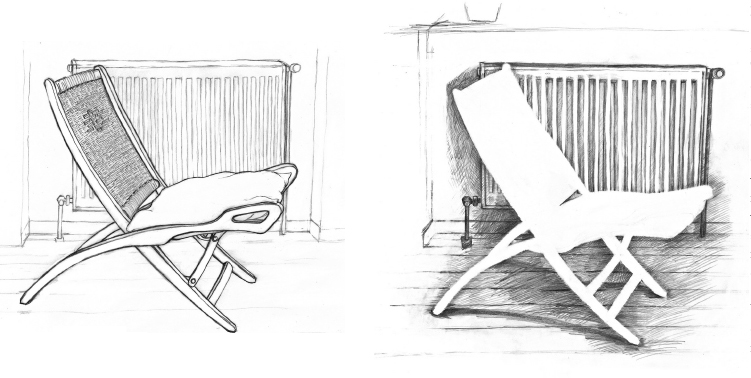
Above right is a drawing of a folding chair. Above left is the same subject but only the negative spaces are drawn.
Another way to identify negative spaces is to imagine that the object is surrounded by black space and draw the black shapes created by the object.
TIP: To help understand a negative space, make a viewfinder (a piece of card with a window cut into it of the same proportions as the drawing paper). Hold the viewfinder in front of your eyes to frame the object you are drawing. Use the frame of the viewfinder to create a boundary for the negative space.

